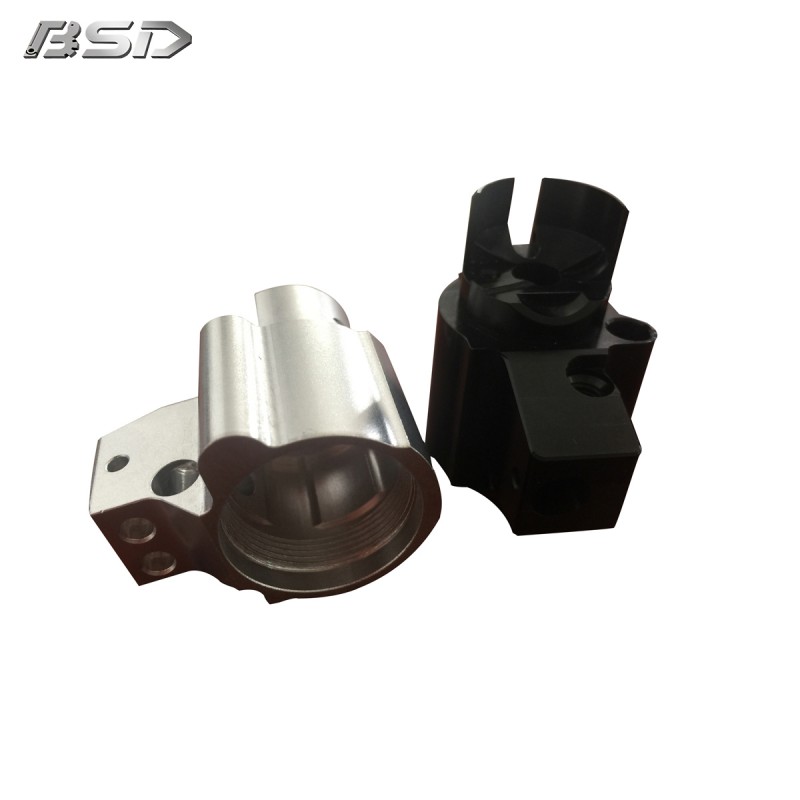What is CNC Machining?
2025-09-12
CNC, which stands for Computer Numerical Control, is a manufacturing process where pre-programmed computer software dictates the movement of factory tools and machinery. This process can be used to control a range of complex machinery, from grinders and lathes to mills and routers. With CNC machining, three-dimensional cutting tasks can be accomplished in a single set of prompts, ensuring unparalleled precision, efficiency, and repeatability in producing parts and components.
At our factory, we leverage state-of-the-art CNC Machining technology to transform raw materials into intricate, high-tolerance parts. This method is fundamentally a subtractive process, meaning it removes material from a solid block—known as a workpiece or blank—to create a custom-designed part. The heart of the operation is the CNC program, a digital blueprint that guides every movement of the cutting tools with extreme accuracy.
Key Components of a CNC Machine
A standard CNC system integrates several critical components that work in unison:
1. Machine Control Unit (MCU): This is the computer that reads the G-code program and converts it into electrical signals to operate the machine.
2. Drive System: This consists of amplifiers, motors, and ball lead-screws that translate the electrical signals from the MCU into precise mechanical movements.
3. Machine Tool: This is the physical machinery that performs the actual machining work, such as a mill, lathe, or router.
4. Feedback System: This system uses sensors to constantly monitor the tool's position and velocity, sending data back to the MCU to ensure pinpoint accuracy.
Our CNC Machining Capabilities and Product Parameters
Our factory is equipped with advanced multi-axis machining centers, allowing us to produce highly complex geometries. The quality of our output is defined by strict parameters that we meticulously control for every project.
Comparison of Our CNC Machining Processes
| Process | Description | Best For | Tolerances |
| CNC Milling | A rotating multi-point cutting tool removes material from a stationary workpiece. | Creating complex 3D shapes, slots, pockets, and holes. | ±0.025 mm |
| CNC Turning | A stationary cutting tool removes material from a rotating workpiece (bar stock). | Creating cylindrical, conical, or spherical parts. | ±0.025 mm |
| 5-Axis Machining | The cutting tool moves across five different axes simultaneously. | Highly complex parts requiring intricate details from multiple angles. | ±0.025 mm |
Frequently Asked Questions (FAQs)
Q1: What materials can be used in CNC Machining?
CNC Machining is compatible with a vast array of materials, including various metals like aluminum, stainless steel, and titanium, as well as numerous plastics such as ABS, Nylon, and PEEK. The choice of material depends on the part's intended application, required strength, weight, and environmental resistance.
Q2: What are the main advantages of using CNC Machining?
The primary advantages are exceptional precision and repeatability, the ability to produce complex geometries, high levels of automation reducing the potential for human error, and excellent consistency across small to large production runs, making it a versatile manufacturing solution.
Why Choose Our CNC Machining Services?
For decades, our commitment at BSD has been to deliver manufacturing excellence. Our investment in the latest CNC Machining technology from BSD ensures that every component we produce meets the most rigorous quality standards. We take pride in our skilled machinists and programmers who oversee every step of the process, guaranteeing that your project is completed to exact specifications, on time and within budget. Contact the experts at BSD Machinery CO., Ltd. today for a competitive quote and experience the precision and reliability of our services.
